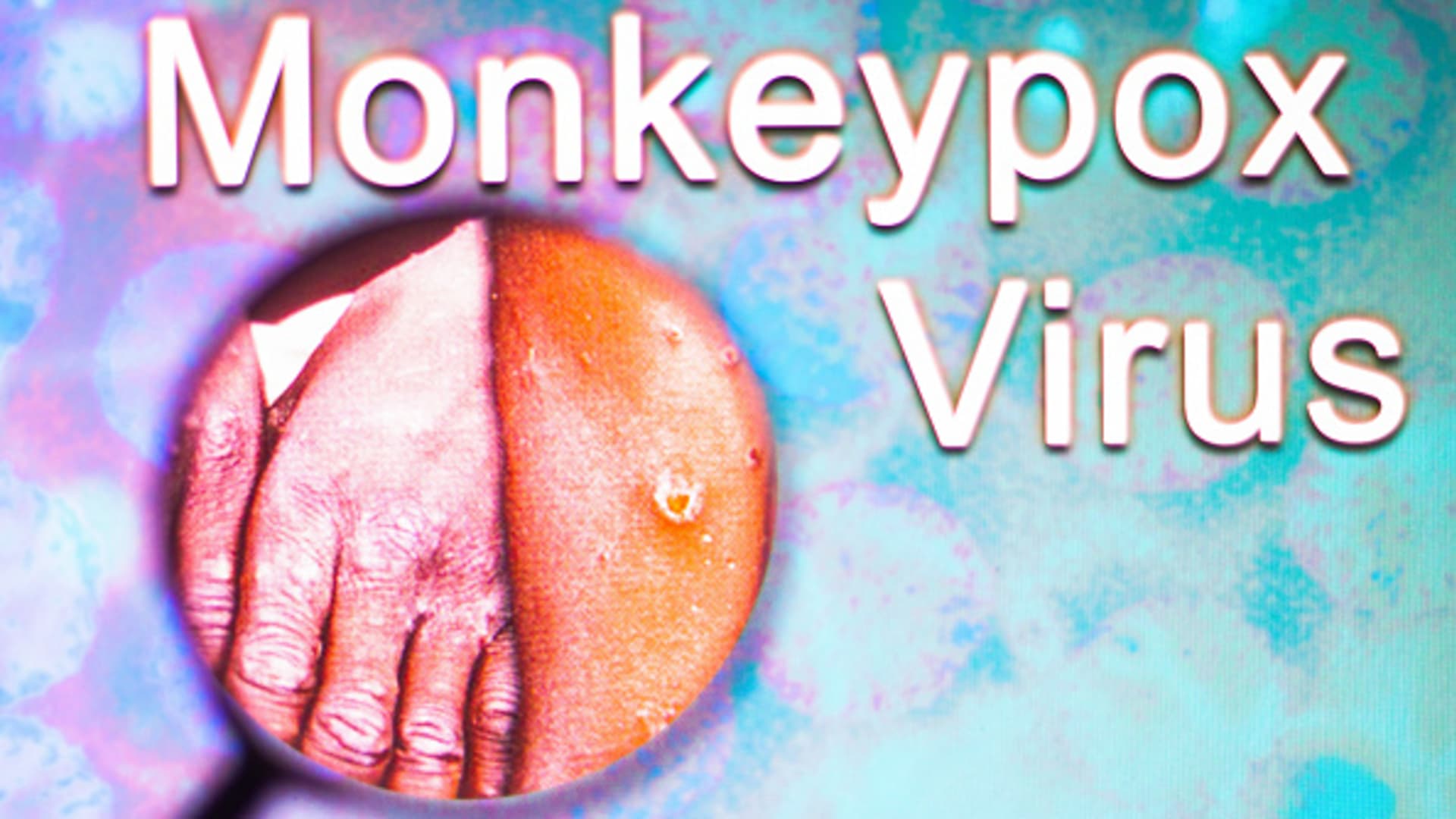MY NUMBER 1 RECOMMENDATION TO LOSE WEIGHT: CLICK HERE
In this photo illustration, a photograph of a Monkeypox virus-infected hand is visible through a magnifying glass. Monkey goats are a viral disease that occurs mainly in Central and West Africa.
Rafael Henrique Lightrocket | Getty Images
The World Health Organization on Wednesday confirmed more than 550 cases of monkey goats in 30 countries as the virus continues to spread around the world.
WHO Director-General Tedros Adhanom Ghebreyesus said the sudden appearance of monkey goats in several countries around the world shows that the virus has been spreading unnoticed for some time outside the countries of West and Central Africa, where it is commonly found.
According to dr. Rosamund Lewis, technical director of the World Monkey Goat Health Organization, may have spread the virus unnoticed for months or years, although investigations are still ongoing and the answers are not yet clear.
“We don’t really know if it’s too late to contain. WHO and all member states are trying to prevent further proliferation,” Lewis told a news conference in Geneva on Wednesday. Contact tracking and isolation of patients who have monkey goats are key to stopping the spread, she said.
Tedros said most cases were reported by men seeking care at sexual health clinics after having sex with other men and developing symptoms. He stressed that anyone can get monkey goats through close physical contact, warned against stigmatizing people and called on states to increase surveillance to detect cases in the general population.
Tedros said monkey goat symptoms generally go away on their own, although the disease can be severe in some cases. No deaths due to current outbreaks have been reported in North America and Europe. However, monkey goats have not yet spread to more vulnerable populations, such as pregnant women and children, in these regions, said Maria Van Kerkhove, WHO technical manager for Covid-19.
However, the WHO has been monitoring monkey goats in Africa for five decades and reports deaths on the continent every year, Lewis said. In five African countries, more than 70 monkey goat deaths were reported in 2022, she said. In the Democratic Republic of the Congo, the number of monkey goats has been increasing in recent years, possibly as a result of the fact that vaccination against black goats was stopped in 1980. Goat monkeys are in the same family of viruses as black goats, although milder.
“Collective immunity in the human population has not been the same since it was at the time of the black eradication,” Lewis said. “Anyone under the age of 40 or 50, depending on what country you were born in or where you may have received the smallpox vaccine, would not now have this protection with this special vaccine.”
The World Health Organization and member states have maintained reserves of vaccines against smallpox, although these are mostly first-generation injections that do not meet current standards, Lewis said. There are also new generation vaccines and medicines for black goats, but the offer is limited. The WHO is working with companies to increase access to these new vaccines and treatments, she said.
“The WHO does not recommend mass vaccination. There is no need for mass vaccination,” Lewis said. Currently, the virus is mostly spread in a particular community, men who have sex with men, and it is important that we provide individuals in that community with the information they need to protect themselves and prevent the virus from spreading, she said.
The largest outbreaks of monkeys outside Africa are in Europe, especially in the United Kingdom, Spain and Portugal. The U.S. has reported at least 15 cases in nine states.
Monkey goats usually begin with flu-like symptoms, including fever, headache, muscle aches, chills, exhaustion, and swollen lymph nodes. Infectious lesions then form on the body. Monkey goats spread mainly through permanent skin-to-skin contact with these lesions. It is considered that a person is no longer contagious when the lesions disappear and a new layer of skin forms.
.
MY NUMBER 1 RECOMMENDATION TO LOSE WEIGHT: CLICK HERE
Source
